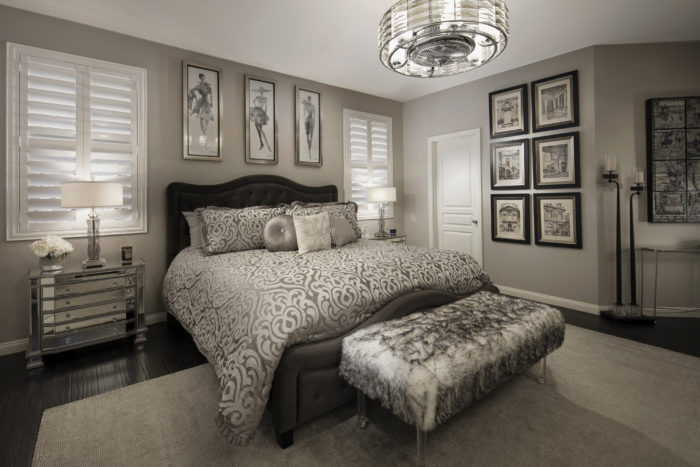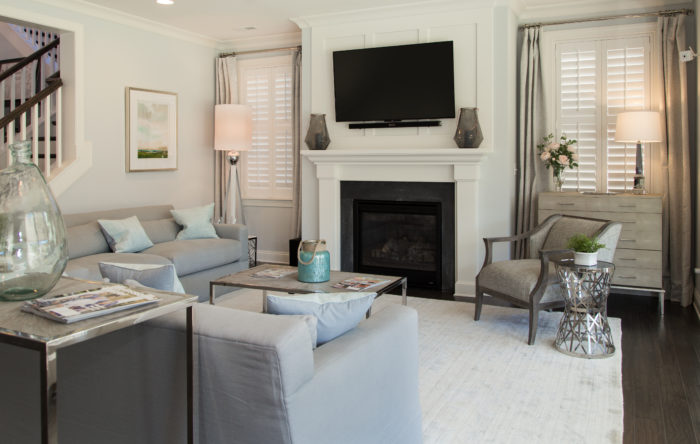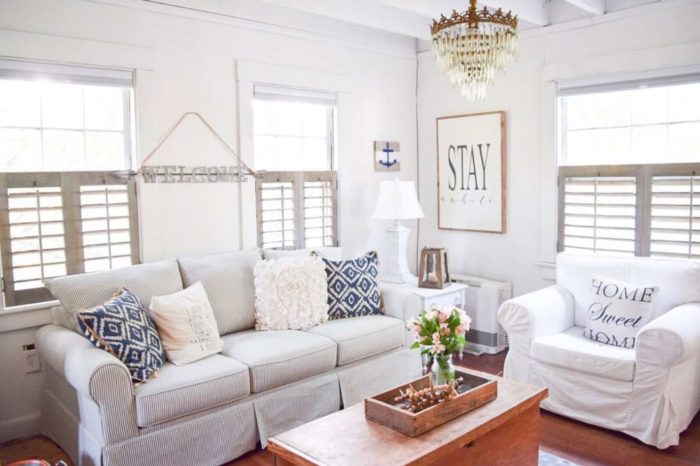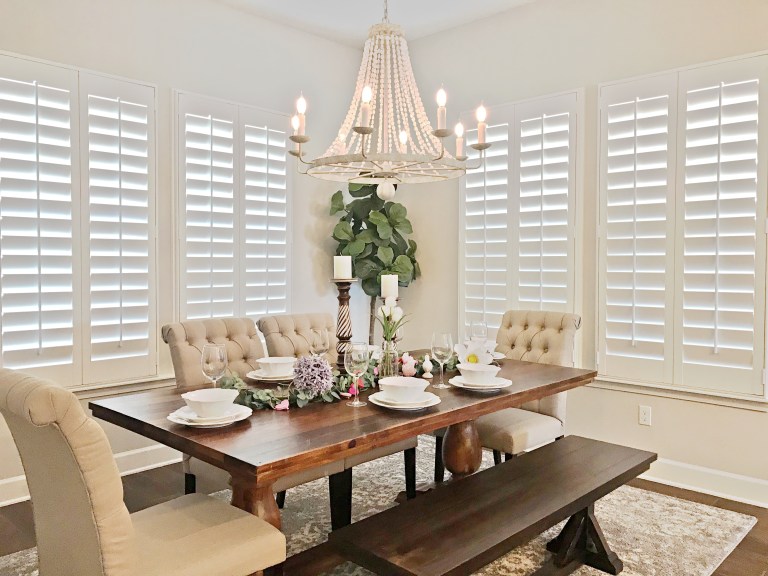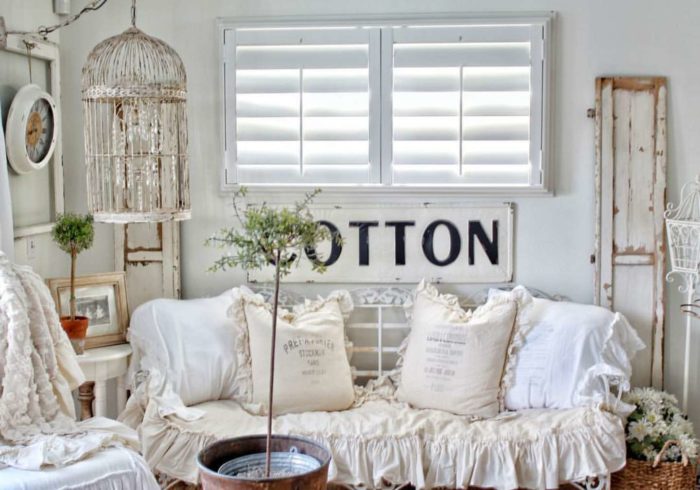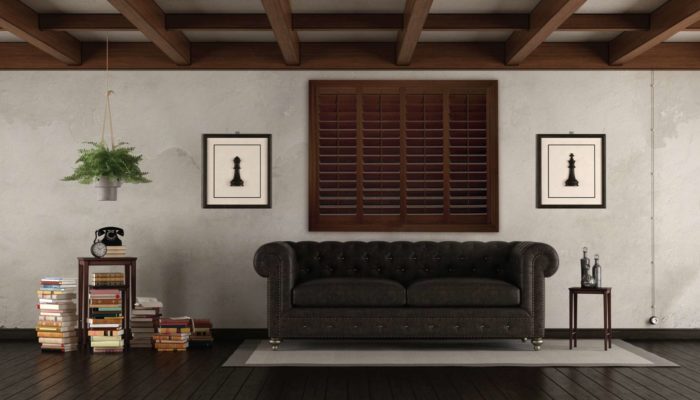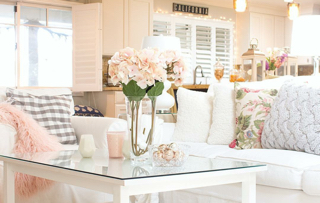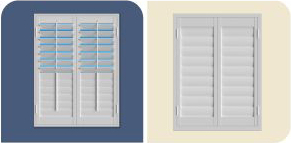Your interior design is more than the sum of its parts. Your floors, walls,
window treatments, and furniture can come together to create a feeling of elegant comfort – or they can clash and make your home seem gaudy or disjointed aesthetically. What makes a difference is how well you can balance and complement the different elements of your home.
To help, here are 5 tips for complementing your flooring, walls, and windows.
Photo courtesy of Room Resolutions
Use A Neutral Base
In the fashion world, black goes with everything. In the home fashion world, it’s white that shines. White, along with other neutrals, can give you a base from which to work from to help your room’s elements work together.
You can use white or off-white in your trim, window treatments (like Polywood shutters or soft white draperies), or in your rugs or furniture to complement other colors in your home’s palette.
Understand How Light Works In Your Space
Color and light work together in your home. The same space may feel bright and airy or dark and small depending on the wall colors and flooring tones. By understanding your home’s lighting you can see how different colors and tones react together, even at different times of the day.
Photo courtesy of
Kellie -Gratefully VintageTo get the most from your lighting, try to use multiple light sources that can balance out the lighting and feel of a room. Reflective surfaces like decorative mirrors can also help bounce light around. Most importantly, use natural light to your advantage with a window treatment that’s easy to adjust. Think plantation shutters or roller shades for instant changes in light when you need it.
Interior Accents Go a Long Way
It’s not just the big things like flooring and furniture that determine the look of your room. With the right know-how and planning, even the smallest elements can make a big impact. Minimal area rugs or art pieces can add a pop of color or texture that contributes to the whole space.
Photo courtesy of Simply French Market
The point is, you don’t have to rely on the big things (flooring, furniture, etc.) to do all the heavy lifting for your interior design. The smaller accents can tie a room together or help create a transition between contrasting wall and floor styles.
Decorate Your Space From the Inside-Out
Certain rooms in your home will have a natural focal point: the bed in the bedroom, the cabinets and counters in your kitchen, and so on. If you’re thinking about changing your flooring, window coverings or wall color, be sure to think about how your options could fit with the most important parts of the room. If you have a large vibrant centerpiece painting on one wall, think twice before painting the adjacent wall a bright color and splitting the room’s focus.
Contrast with Texture
Contrast is a key piece of interior design that pulls your room together so that it doesn’t feel flat. Not only should your room’s color palette have complementing colors and a contrast between light and dark hues; your room also needs a variety of textures that contrast each other.
If you have carpeted floors, add smooth glass accessories. If your room has some larger metal lamps or pieces, add some organic items like fiber rugs, woven shades, or live plants. These small contrasting details will help your home feel more balanced and put together.
Photo courtesy of Happy Happy Nester
Get More Window Fashion Tips from Sunburst
For more home design help, especially in the realm of window treatments and window fashions, get in touch with Sunburst. Your local Sunburst Shutters rep is a call away at 877-786-2877 .
